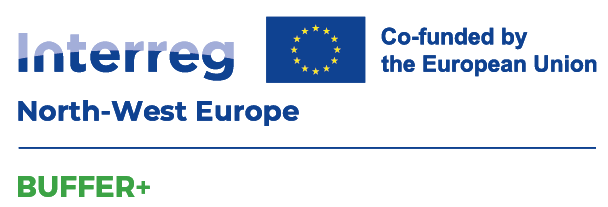BUFFER+
Buffer carbon and water in peatlands:
landscape-based solutions for climate adaptation
- PROGRAMME : Interreg North West Europe
- PRIORITY : Smart climate and environmental resilience for NWE territories
- SPECIFIC OBJECTIVE : 2.4 - Promoting climate change adaptation and disaster risk prevgention, resilience, taking into account eco-system based approaches
- PARTNERSHIP WITH CHAMBERS OF AGRICULTURE : AC3A, Chambre Régionale d’agriculture Bretagne, Chambre Régionale d’agriculture Normandie, Chambre Régionale d’agriculture Pays de la Loire
- LEAD PARTNER : Province of Groningen
- DATES : 23/03/2023 – 30/06/2027
- TOTAL BUDGET : 9,7 m€ - 5,85M€ ERDF


Challenges
Peatlands have a high carbon storage potential and, thanks to their water retention capacity, play an important role in managing periods of rain or drought. However, in the NWE regions, vast areas are drained for peat extraction, agriculture or forestry, making them sources of CO2 emissions. By restoring the capacity of peatlands to store carbon and water, the BUFFER+ partners will be working to adapt to climate change, while restoring biodiversity and creating new sources of income.
Actions
BUFFER+ involves 21 partners and 7 associated organisations from regions representing all NWE peatland types. Building on the results of previous projects, R&D organisations, land managers, businesses, network operators and local authorities are proposing to work on the following points:
1) Restoring and sustainably preserving peatlands, creating carbon and water storage and increasing biodiversity.
2) Developing new economic models adapted to climate change, stimulating a sustainable local economy.
3) Improving the governance of peatland areas by involving industry, researchers, local authorities and citizens in decision-making, co-creating and disseminating new solutions.
Deliverables
To achieve these objectives, the partners will be testing new approaches: wetland farming, payments for environmental services, natural solutions for replenishing water, improving water quality and the formation of new peat. In anticipation of the forthcoming ban on peat-based potting soils, peat-free substrates will be developed. Monitoring activities, including biomolecular trials, biodiversity measurements and digital twinning, will also be part of the new approaches, as will support for collective approaches.
Buffer+ is 60% funded by the INTERREG North-West Europe programme.
- Related news
The “Tourbeux” on their way to Galway for the Mapathon on Peatlands and Policies
- AC3A projects
